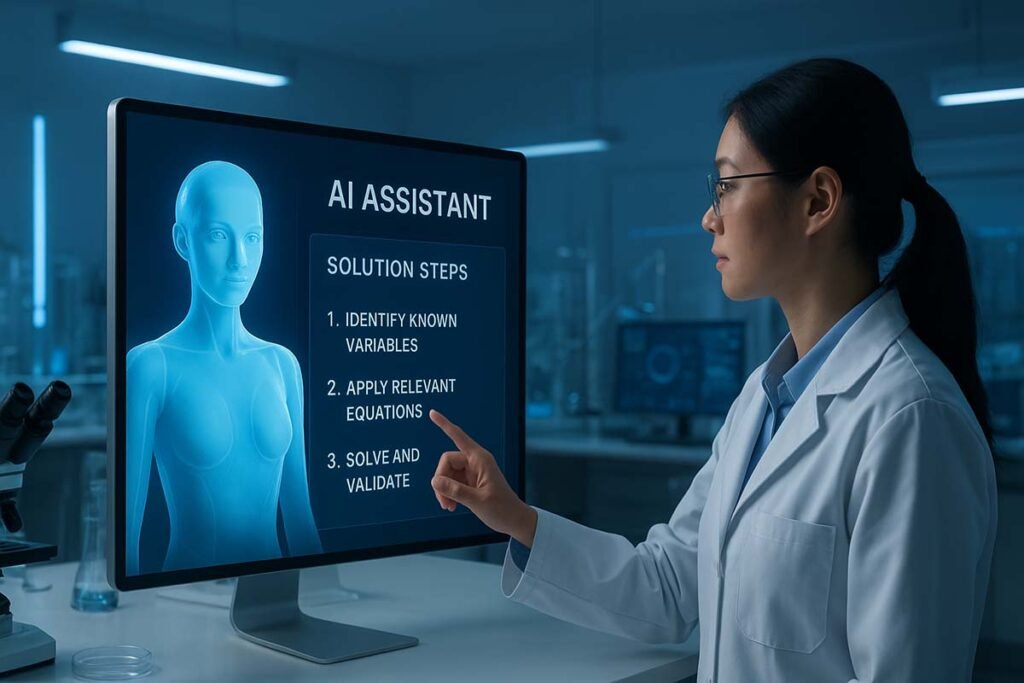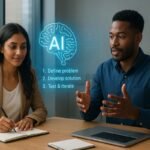For decades, artificial intelligence was good at one thing—pattern recognition. It could identify faces in photos, recommend Netflix shows, or autocomplete your texts. But there was always something missing: reasoning. Unlike humans, traditional AI systems rarely understood why they made decisions. That’s exactly what changed with the advent of reasoning AI models—systems designed to solve problems the way scientists, mathematicians, and critical thinkers do: step by step.
From Google DeepMind’s Gemini to OpenAI’s experiments with chain-of-thought reasoning, these models are no longer just parroting information; they’re learning to reason through it. The shift is revolutionary—and it raises profound questions. Are machines beginning to “think”? And what does this mean for education, business, medicine, and society at large? Let’s explore.
The Rise of Reasoning AI
From Pattern Recognition to Problem Solving
- Early AI (1950s–2010s): Focused on symbolic logic and then deep learning for pattern recognition.
- Generative AI (2020–2023): Large language models (LLMs) like GPT-3 and GPT-4 could produce fluent text but often “hallucinated.”
- Reasoning AI (2024 onwards): Models now use chain-of-thought reasoning, breaking problems into smaller parts.
Why Step-by-Step Thinking Matters
Humans naturally solve problems by reasoning in stages. Whether it’s balancing a budget or testing a scientific hypothesis, we go step by step. Reasoning AI tries to simulate this process, reducing errors and hallucinations.
How Reasoning AI Works
Chain-of-Thought Reasoning
Instead of spitting out an answer immediately, reasoning models explain their thought process. For example:
Question: “If a train travels at 60 mph for 2 hours, how far does it go?”
- Traditional AI: “120 miles.”
- Reasoning AI:
- Speed = 60 mph
- Time = 2 hours
- Distance = speed × time = 120 miles
This structured explanation builds trust and improves accuracy.
Self-Correcting Loops
Some models now use “reflection,” where AI reviews its own answers, identifies potential mistakes, and makes corrections—just like a scientist double-checking their work.
Reasoning + Tools
Modern reasoning AIs don’t just “think”—they interact with external tools:
- Calculators for precise mathematical results.
- Search engines for real-time knowledge.
- Simulations for testing hypotheses in science and engineering.
Real-World Applications of Reasoning AI
Education: Smarter AI Tutors
- Explains math and science step-by-step instead of just giving solutions.
- Helps students learn how to think analytically.
- Case Study: An Arizona high school piloted a reasoning AI tutor in algebra, and test scores improved 20% compared to traditional tools.
Medicine: Diagnostic Assistance
- Doctors can input symptoms and get not just a diagnosis but also the reasoning behind it.
- This transparency builds trust in AI-assisted healthcare.
- Example: Mayo Clinic experiments with reasoning AI to guide oncology treatment choices.
Business & Finance: Strategic Planning
- Unlike older AIs that optimized tasks, reasoning models can propose stepwise strategies for growth.
- Example: A consultancy uses reasoning AI to outline a five-step market expansion plan, complete with pros and cons.
Scientific Discovery
- Reasoning AI is being trained to generate hypotheses and design experiments.
- DeepMind’s AlphaFold already transformed biology by predicting protein structures; step-by-step reasoning models take this further by suggesting why those structures matter.
The Arms Race for Better Reasoning Models
Tech Giants Leading the Way
| Company | Reasoning AI Initiative | Key Feature |
|---|---|---|
| OpenAI | GPT with chain-of-thought | Stepwise problem-solving in math & logic |
| Google DeepMind | Gemini & AlphaCode | Multi-modal reasoning in text, code, and visual data |
| Anthropic | Claude reasoning models | Safer, interpretable reasoning output |
| Microsoft | Copilot with AI reasoning | Office productivity & decision support |
Expert Opinions
- Dr. Ethan Perez (AI Researcher, Anthropic): “Reasoning AIs bridge the gap between human intuition and machine efficiency—it’s about teaching computers to think like problem-solvers.”
- Prof. Melissa Knox (Harvard AI Lab): “This could reshape education. Students will use AI not just to get answers, but to learn reasoning itself.”
Benefits and Limitations
Benefits of Reasoning AI
- Transparency – You see the process, not just the answer.
- Higher accuracy – Less hallucination than traditional LLMs.
- Educational value – Teaches people “how to think.”
- Interdisciplinary impact – From law to medicine to climate science.
Limitations & Challenges
- Computationally expensive – Step-by-step reasoning requires more processing power.
- Slower responses – Because it explains its logic.
- Still imperfect – Can reason wrongly with flawed data.
- Ethical risks – If misused, reasoning AI could create “credible-sounding” but dangerous misinformation.

Ethical & Philosophical Implications
Are Machines Really “Thinking”?
- Humans reason with context, emotions, and values. AI reasons with data and logic.
- Does step-by-step reasoning = understanding, or just better mimicry?
- Ongoing debate: Is AI approaching artificial general intelligence (AGI) or still just an advanced calculator?
Trust and Responsibility
- Should reasoning AI decisions in healthcare, law, or finance be trusted?
- Who is responsible if a reasoning AI’s “scientific step-by-step” process leads to the wrong outcome?
The Future of Reasoning AI
Predictions for the Next 5 Years
- Classrooms will require students to work with reasoning AIs as learning buddies.
- Scientific labs will rely on AI for hypothesis generation.
- Businesses will integrate AI in strategy sessions, not just execution tasks.
Collaboration, Not Replacement
Reasoning AI isn’t here to replace thinkers—it’s here to augment human reasoning. Just as calculators didn’t eliminate math classes but made them better, reasoning AI could improve how we approach knowledge itself.
Reasoning AI models usher in a new era: one where machines don’t just generate answers but think step by step like scientists. From classrooms to hospitals to business strategy rooms, they promise accuracy, transparency, and trust.
Yet the story is unfinished. These models are powerful but imperfect. They represent a tool, not a replacement for human reasoning. The future belongs to those who learn to collaborate with AI, harnessing its structured logic while applying human wisdom, experience, and ethics.
👉 Are we ready to trust machines as reasoning partners? Or will humans always need to be the final decision-makers? Share your thoughts below!
FAQs
Q1. What are reasoning AI models?
Reasoning AI models are artificial intelligence systems designed to solve problems step-by-step, similar to how humans and scientists think analytically.
Q2. How do reasoning AI models differ from traditional AI?
Unlike older AIs that only recognize patterns, reasoning AI explains its process, reducing errors and improving transparency.
Q3. What is chain-of-thought AI?
It’s an approach where AI breaks a problem into smaller logical steps instead of giving a direct answer, improving reliability.
Q4. What are real-world applications of reasoning AI?
Education (AI tutors), healthcare (diagnostic reasoning), business (strategic planning), and scientific research are top uses.
Q5. Are reasoning AI models 100% accurate?
No. While they’re more reliable than traditional AIs, they can still produce flawed reasoning if their data is biased or incomplete.
Q6. Will reasoning AI replace human thinkers?
No. They’re designed to assist human reasoning, not replace it—similar to how calculators assist math.




Pingback: The $3.6 Trillion AI Market: 30+ Profitable AI Business Ideas for 2025 - FirstsPost